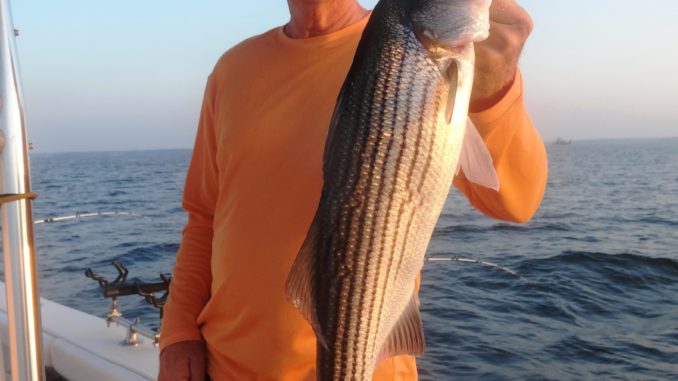
Humps, high spots on lower end of Midlands lake are holding plenty of fish
Saying striper fishing is as hot as the South Carolina August weather is a bold statement, but one that is true, at least right now at Lake Murray. Buddy Bouknight, who guides at Lake Murray, has his clients finishing off their limits within an hour or two most mornings.
“It almost doesn’t seem right, fishing for an hour or two and having as many as four clients with limits of good-sized stripers, but that’s the way the action is right now,” said Bouknight (803-319-8722). “The regulation for this time of the year at Lake Murray is a fisherman must keep every striper until they have the limit, but most of what we’re catching are quality fish anyway. I’d look for this action to hold up for a while into August on the same pattern we’re on , and then the open-water fishing gets going, and it’s just as productive.”
Bouknight is using live herring as bait and is targeting the humps and high spots on the lower part of Lake Murray.
“Stripers will move around some, but basically I’m finding lots of striper in deep water, especially relating to humps in 60 to 70 feet of water,” he said. “As this pattern progresses, the fish will likely move deeper. I use baitcasting tackle with a two-ounce sinker to get the bait down quickly, I am using Trilene Transophic line and a 15-pound test Trilene fluorocarbon leader about two to three feet long. The hook is extremely important, and small is the key. A No. 1 Gamakatsu circle hook is the largest size I use, depending on the bait size. This light hook keeps the bait alive better and more lively, both essential to striper success.”
Bouknight uses his electronics to locate a hump where stripers are massed, and then he works around the hump, using his trolling motor and watching his graph to ensure he stays on fish.
“As the sun gets up, sometimes the fish will usually begin to move deeper, depending on the forage pattern,” he said. “Another technique I’ll use if we don’t get limits early is to work the deeper fish later in the morning. We’ll drop our bait above the level the fish are shown on the graph; they come up readily for a bait but not down. Plus, sometimes they’ll suspend right at the top of the trees, and it’s crucial you keep the bait above the treeline.
Bouknight said as the open-water patterns gets into gear later this month, the fish will be in the lower end of the lake and he’ll be fishing in as much as 120 feet of water.
“The key then is the lake has stratified, and the stripers will often be suspended 30 to 40 feet deep in that deep water,” he said. “I will use down rods … plus I’ll use no-weight free lines behind the boat and planner boards to present the bait to the fish in a variety of methods. As a bonus, at this time of the year, we’ll sometimes get into some good topwater schooling action, and that often doesn’t occur until mid-morning; it doesn’t necessarily occur right at dawn only.”


Be the first to comment